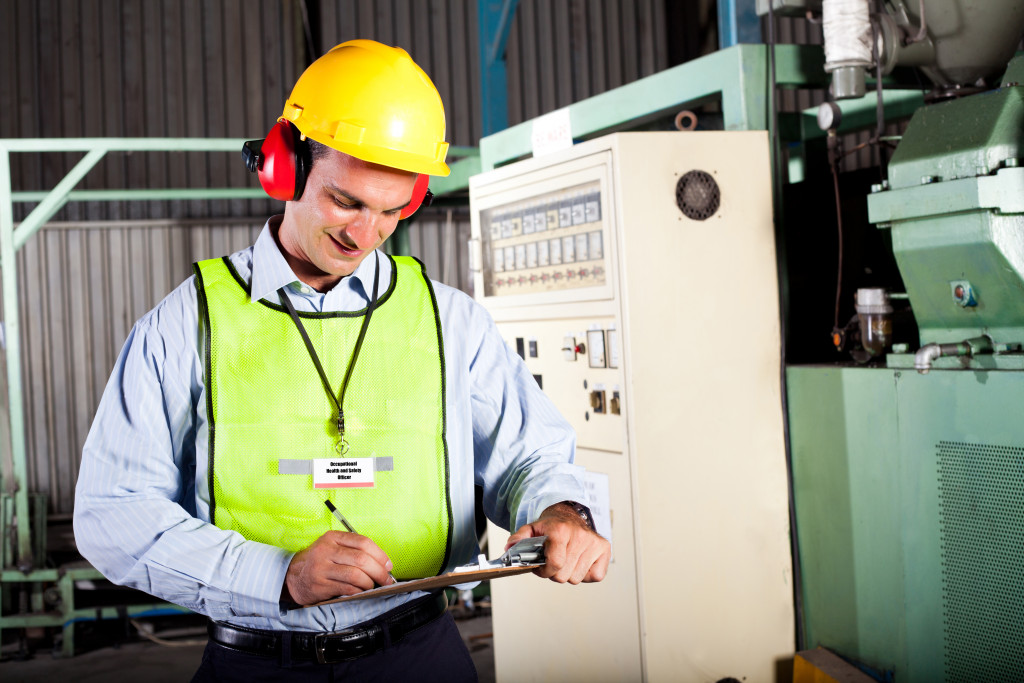- Being prepared for a factory building inspection can save you from incurring fines and penalties.
- Research your state’s safety codes and regulations to have a better idea of what to expect during an inspection.
- Check your utility lines and make sure hazardous materials are properly stored in safe places.
- A clean and organized facility will leave a good impression on your inspector and help you get a better score.
For factory owners, building inspections can be nerve-wracking. Not only do you want to make sure that the inspection goes smoothly and your facility passes with flying colors, but you also want to avoid any potential penalties or fines.
A study was conducted by researchers at MIT that focused on the effectiveness of building inspections in terms of mitigating workplace risks. It revealed that regular inspection activities are essential to identifying and addressing potential safety hazards before they become larger problems. Inspections can also help ensure that machinery and equipment are up to date and functioning properly, reducing the risk of breakdowns.
Fortunately, there are some steps you can take to help ensure that your inspection goes smoothly and your factory is in compliance with all applicable laws and regulations. Here’s what you need to do.
Do your research
Before any building inspection takes place, it’s important that you know what the inspector is looking for. Different types of building inspections will have different requirements, so be sure to research the specific regulations that apply to your facility.
Ensure compliance with safety codes and regulations
Factory owners should familiarize themselves with the applicable safety codes and regulations in order to ensure their premises are up to code. This includes carrying out a detailed inspection of the building, making any necessary repairs or modifications, and installing necessary equipment like fire alarms, fire extinguishers, emergency lighting, and smoke detectors.
Prepare workers for the inspection
Employees need to be informed about what procedures they should follow during inspections so as not to give off any false impressions or incriminating evidence which may lead to non-compliance penalties or delays in receiving permits. Workers should also be trained on how to answer questions accurately without being evasive or confrontational when asked by inspectors.

Have your documents ready
Having all relevant documents ready for presentation will greatly speed up the process of building inspection; these may include permits, blueprints of installations, as well as records of prior inspections carried out at your facility.
Check your equipment
Inspecting equipment is typically a major part of a building inspection, so it’s important that all of your machinery is in good working order before an inspector arrives onsite. Take inventory of all of your equipment ahead of time, perform routine maintenance checks as needed, and be sure to repair or replace anything that may cause problems during an inspection.
Utility lines
When preparing for a building inspection, it is also essential to check the utility lines. Utility lines provide power and other services to the building, and ensuring that they are in good condition is an important part of the inspection process. Poorly maintained utility lines can cause hazards such as electrical fires or equipment failure, so it’s important to inspect them regularly.

Inspecting the utility lines should include checking all visible wiring, fuses, and circuit breakers; inspecting insulation on wiring; making sure that outlets are grounded properly; and testing any electrical equipment for safety. It’s also important to ensure that any accessible plumbing is correctly installed and that no water leaks are present. If there are any defects in the utility lines, you need to call on an industrial electrician or plumber to fix those problems.
Hazardous materials
It is essential to label all hazardous materials stored onsite correctly and accurately in order to avoid any potential issues during an inspection. The labels should include the name of the material, the date it was received, and any other relevant information. It is also important to ensure that all employees who handle such materials are knowledgeable about emergency procedures, so they can readily answer any questions the inspector may have.
Clean and organize
A messy factory isn’t going to win any points during an inspection. Before an inspector arrives at the site, it is important to make sure that all the areas in and around your factory are clean and organized. This means sweeping and mopping floors, tidying up desks and workstations, dusting shelves and equipment, and disposing of any trash or debris.
Additionally, be sure to check the lighting in the facility. Poorly lit areas can be a safety hazard and can interfere with an inspector’s ability to accurately assess the condition of the factory. Replace any old or burned-out bulbs, and make sure that all light fixtures are properly secured and not damaged.
Preparing for a factory building inspection can be an intimidating process, but it doesn’t have to be. By taking the time to do your research, ensuring compliance with safety codes and regulations, preparing workers for the inspection, and having all relevant documents ready for presentation, you can make sure that your facility can pass any inspections. Taking these extra steps ahead of time will help ensure that you don’t incur any costly fines or penalties from the inspection process.




